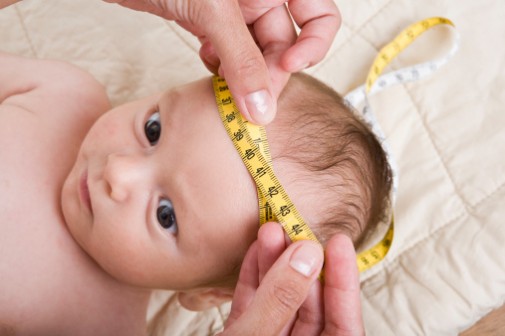How effective are baby helmets?

Does a helmet help correct misshapen heads or not? This may be the question that parents of infants with misshapen heads may ask following announcement of the results of a study purportedly demonstrating that head-shaping helmets – a common treatment for infants with flat head syndrome – offer little in the way of help for the problem.
The findings, published online in the British Medical Journal, are proving a surprise to some physicians who specialize in craniofacial disorders. In the study, researchers at the University of Twente in the Netherlands analyzed two sets of 42 babies with misshapen heads. Half the babies wore a corrective helmet for approximately six months while the second half received no treatment. When researchers examined the babies two years later, they found no substantial variance in the skull shape between those who wore a helmet and those who did not.
“I was very surprised at the results,” says Dr. Mark R. Proctor, an associate professor of neurosurgery at Boston Children’s Hospital, in a New York Times article, adding that the study was “rigorous.”
However, Dr. Frank Vicari, a pediatric plastic/craniofacial surgeon at Advocate Children’s Hospital and medical director of the Head Shape Evaluation Clinic in Park Ridge, Illinois, who has treated thousands of infants for this condition, points out that nearly 75 percent of infants who wore a helmet in the study experienced problems.
“Helmet problems included rotation of the helmet and pain, both of which indicate a poor fit,” he says. “This study speaks more to an issue with the helmet fit. If you put a poorly fit helmet on a child who does not need it, you will not see a beneficial result. Odor also was listed a helmet problem, which should not be encountered as parents should be given education on how to clean and care for the helmet to avoid any foul smell.”
In a letter issued to the New York Times, The American Orthotic and Prosthetic Association echoes the concerns of Dr. Vicari. The letter states, “This raises serious concern over the clinical application of the helmets used in this study. The value of this research is fully reliant upon the quality of helmet fit…One cannot expect a device which shows many signs of possibly having been fit improperly to yield optimal results.”
Dr. Vicari has had great success in treating patients with misshapen heads. “Infants undergoing treatment either with a home program and physical therapy or just with therapy and a helmet achieve a 95 percent success rate,” he says. This is in contrast to the 23 to 26 percent overall success rate found in the Netherland study. “Treatment protocol must be individualized and based on age and severity for each child. A child with a more severe asymmetry must be considered earlier for helmet therapy than someone with more moderate misshaping.”
In his own research, Dr. Vicari has found that approximately 75 percent of infants who have a mild to moderate case do not need helmet therapy and can be treated with physical therapy and a guided home program that meets the specific needs of the child and family. Home education for parents and caregivers includes more “tummy time” and less time for the baby to lie on its back in a crib or car seat.
“The patients selected for helmets in the Netherlands study would likely not have been recommended for helmet therapy under our criteria, as we have found conservative measures including physical therapy to be successful in treating moderate cases,” Dr. Vicari concludes.
Related Posts
Comments
7 Comments
About the Author
Julie Nakis, health enews contributor, is manager of public affairs at Advocate Children's Hospital. She earned her BA in communications from the University of Iowa – Go Hawkeyes! In her free time, she enjoys spending time with friends and family, exploring the city and cheering on the Chicago Cubs and Blackhawks.


















Dr. Vicari’s work in resolving head-shape issues in infants is testament to his expert comments about the helmet study.
This is incredible information! What a good read.
Regardless of the conflicting reports on the use of infant helmet therapy, I believe doing something is better than doing nothing.
Perhaps the study should be replicated to determine if the results were somehow skewed.
Dr. Vicari spoke at one of our pediatric integrated team meetings about infants diagnosed with Torticollis and the importance of physical therapy and tummy time. Two weeks after the meeting my granddaughter was seen by her pediatrician who noticed that her head was slightly flat on one side. I told her about Dr. Vicari and she immediately scheduled an appointment for Ashland. Dr. Vicari diagnosed Ashland with mild to moderate torticollis and recommended physical therapy and more ‘tummy time’ and in a short amount of time my granddaughter’s condition has noticeably improved. As my daughter would say, it was ‘divine intervention’ that I met Dr. Vicari that day.
Dr. Vicari fitted our oldest daughter with a helmet over 10 years ago and we are thrilled with the results!
Thanks Dr. Vicari!
This is great information! Despite my obsession with tummy time. The right side of my 5 month old’s head is flatter than the other. We are hoping that a helmet will not be prescribed…. we’ll see.
Tornados, shelters, kids, among everything you have in it store helmets…for everyone. You can hug the kid tightly but a full face helmet may be the best answer. I see all sorts of helmets being sold at garage sales for a buck….better to throw them in the shelter area.